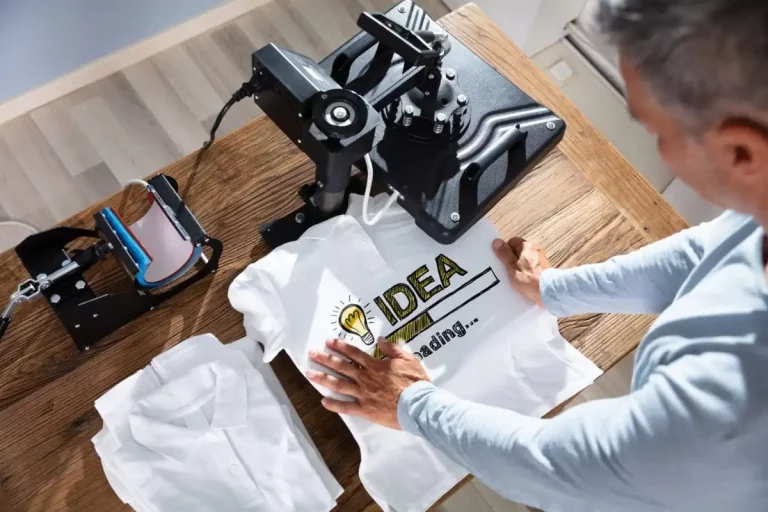Screen Printing Uncovered: Everything You Required to Know About Tee and Garment Printing Methods
Screen printing is a fascinating method that incorporates art with strategy, providing limitless possibilities for creativity. All set to discover the important elements that make display publishing an art kind?
The Essentials of Screen Printing: How It Functions
When you dive into screen printing, you'll discover it's both an art and a science. At its core, screen printing involves creating a pattern, or screen, that permits ink to go through only in details areas (screen printing kit). You start by selecting your style and preparing your display with a light-sensitive emulsion. As soon as you expose this emulsion to light, it sets, leaving your style as a negative area.
Following, you'll mix your inks and prepare your printing surface area. Setting the screen over the textile, then make use of a squeegee to push ink with the screen onto the garment. This procedure requires precision, as you want clear, vivid prints. After printing, you'll treat the ink with warmth, ensuring it sticks to the material and lasts via washes. Each action is important, and mastering them will certainly elevate your screen printing abilities, changing straightforward garments into one-of-a-kind, expressive items.
Sorts Of Screen Printing Strategies
When you realize the basics of display printing, it's time to discover the various methods that can raise your layouts. One preferred approach is conventional display printing, where ink is pushed through a stenciled screen. This technique is fantastic for vibrant, vivid shades. Then there's water-based ink printing, which provides a softer feeling and is environmentally friendly, however it needs a different technique to treating.
If you're going for fine information, take into consideration discharge printing. This strategy gets rid of color from the fabric, leaving a soft, classic appearance. One more option is plastisol printing, understood for its resilience and vibrant colors, making it a favored for many brand names. Experiment with halftone printing to create gradient impacts and intricate layouts. Each method has its special beauty, so don't hesitate to attempt them out to locate what fits your style best!
Essential Tools for Screen Printing
To achieve stunning outcomes in display printing, having the ideal equipment is fundamental. You'll need a tough display printing structure, which holds the mesh that moves your layout onto the garment. Next off, invest in premium squeegees; these are essential for using ink equally across the screen.
Picking the Right Inks and Products
When picking inks and products for display printing, you require to think about the kind of ink that works best for your job. Consider fabric compatibility to ensure your layouts look wonderful and last long. Also, check out environmentally friendly ink alternatives to make your printing process much more sustainable.
Sorts Of Screen Inks
Selecting the appropriate display ink is vital for accomplishing lively, long lasting prints that meet your project's needs. There are a number of types of screen inks to check out. Plastisol ink is preferred for its adaptability and simplicity of use, giving outstanding color opacity on dark materials. Water-based ink, on the various other hand, provides a softer feeling and is environment-friendly, making it suitable for those wanting to decrease their environmental influence. Discharge inks get rid of color from the fabric, resulting in a soft, vintage look yet call for particular handling. Ultimately, specialty inks, such as metallic or glow-in-the-dark, can include special effects to your designs. Review your job needs and select the ink that aligns ideal with your wanted end result.

Fabric Compatibility Considerations
Comprehending material compatibility is important for accomplishing top notch screen prints, especially given that different products react distinctively to numerous inks. When choosing inks, consider the fabric type-- cotton, polyester, or blends. For cotton, water-based inks function well, using gentleness and breathability. Polyester, on the various other hand, typically calls for plastisol inks for better attachment and lively shades. If you're publishing on blends, you might require to utilize a combination of both types. Always check your inks on example material to guarantee they stick properly and maintain color honesty. In addition, keep in mind that textile weight and appearance can impact the last end result, so selecting the right ink and material combo is important for your task's success.
Eco-Friendly Ink Options
Green inks are ending up being a prominent selection for display printers that wish to decrease their ecological impact while preserving quality. When choosing inks, consider water-based inks, which are much less dangerous and less complicated to tidy up contrasted to typical solvents. These inks bond well with fabrics, delivering vibrant results without hazardous chemicals. You could additionally discover eco-solvent inks that use fewer unstable organic compounds (VOCs), making them a more secure alternative for both your health and the earth.
Furthermore, try to find inks made from eco-friendly sources, such as soy or vegetable-based options. By selecting the ideal inks and materials, you'll not just develop sensational designs but likewise add to a much more sustainable printing procedure. Make the button, and your prints will reflect your commitment to the environment!
Preparing Your Style for Screen Printing

Submit Style Demands
To guarantee your style looks vivid and sharp on textile, you'll need to pay close interest to submit layout demands for screen printing. Make certain your layout has a transparent history to protect against undesirable white sides on your prints. Keep color settings in mind; CMYK is standard for screen printing, so convert your RGB creates as necessary.
Shade Separation Methods
Shade splitting up is a vital action in preparing your layout for display printing, and understanding it can considerably boost your print high quality. You'll need to break your layout into specific shades, as each color calls for a separate screen throughout printing. This accuracy not just guarantees precise shade representation but likewise simplifies the printing process.
Resolution and Dimension
Attaining the very best lead to display printing begins with assuring your layout has the appropriate resolution and size. Preferably, your artwork must be at least 300 DPI (dots per inch) for sharp, clear prints. If you make use of lower resolution, your end product might look unprofessional and pixelated.
When it comes to size, consider the dimensions of your print area. Design your artwork to match the last print size, ideally producing it in the actual dimensions you'll be printing. This means, you'll avoid any kind of unexpected scaling issues.
Constantly inspect your design in both vector and raster styles. Vector graphics can be scaled without losing high quality, making them perfect for screen printing. Preparing appropriately will assure your design looks impressive on every garment!
Step-by-Step Display Printing Refine
Display printing is a dynamic procedure that allows you to produce dynamic designs on numerous surfaces. To begin, you'll need a screen, solution, and your selected ink. Prepare your display by cleansing it thoroughly. Next, use the solution evenly and let it dry in a dark area. When completely dry, reveal your display to light with your layout positioned on it, which will certainly solidify the emulsion where the light hits, producing a stencil - screen printing kit.
After rinsing the unexposed emulsion, your screen prepares. Set it up on your printing surface and straighten your garment under it. Put ink onto the screen and utilize a squeegee to press the ink through the stencil onto the fabric. Lift the screen carefully and let the print completely dry. Lastly, heal the ink making use of heat to ensure toughness. That's it! You've successfully display published your style.
Tips for Successful Display Printing Projects
While you're diving visit here into your screen printing t-shirt printing tasks, keep in mind that preparation is essential to success. Start by collecting all your materials-- inks, garments, mops, and screens. A clean office helps stop undesirable errors, so clean prior to you begin.
Following, verify your artwork is high-resolution and properly sized for your garment. Evaluate your display for correct direct exposure and clean it thoroughly to stay clear of spots. When mixing your inks, follow the supplier's standards to achieve the ideal uniformity.
During printing, use also stress with your squeegee for regular results. Do not rush; take your time to verify each print satisfies your criteria. After printing, allow your garments dry totally prior to dealing with or packaging them.
Lastly, always maintain an example of your benefit future reference. By doing this, you can analyze your development and boost your methods with time. Pleased printing!

Often Asked Questions
The length of time Does It Take to Establish up a Screen Printing Task?
Establishing a display printing work usually takes about thirty minutes to an hour. You'll prepare the displays, mix inks, and change journalism. The moment varies based upon intricacy and experience, so stay organized!
Can I Publish on Various Textile Keys In Utilizing the Exact Same Strategy?
Yes, you can print on different material kinds using the very same technique, yet you'll require to readjust your inks and setups. Some textiles soak up ink in different ways, so experimenting assurances the ideal results for every material.
What Prevail Errors to Stay Clear Of in Screen Printing?
When screen printing, stay clear of usual blunders like utilizing the incorrect ink, overlooking proper exposure times, or skipping pre-press checks. Always check your setup and keep clean displays to ensure quality outcomes each time.
Exactly How Can I Correctly Tidy and Maintain My Display Printing Equipment?
To correctly tidy and keep your screen printing devices, you need to regularly wash displays with appropriate solvents, inspect mops for wear, and ensure all tools are stored completely dry and dust-free. Uniformity protects against expensive repairs and improves efficiency.
Is Screen Printing Eco Pleasant Contrasted to Various Other Approaches?
Screen printing can be more eco-friendly than various other techniques, specifically if you use eco-conscious materials and water-based inks. By picking lasting products and methods, you decrease waste see here now and decrease your effect on the earth.
Screen Printing Uncovered: Whatever You Need to Know Regarding Tee Shirt and Garment Printing Techniques
At its core, screen printing entails creating a pattern, or display, that permits ink to pass through just in specific areas. Position the screen over the textile, after that use a squeegee to press ink via the screen onto the garment. One preferred approach is standard screen printing, where ink is pushed via a stenciled display.When choosing inks and products for display printing, you require to take right into account the type of ink that functions finest for your project.